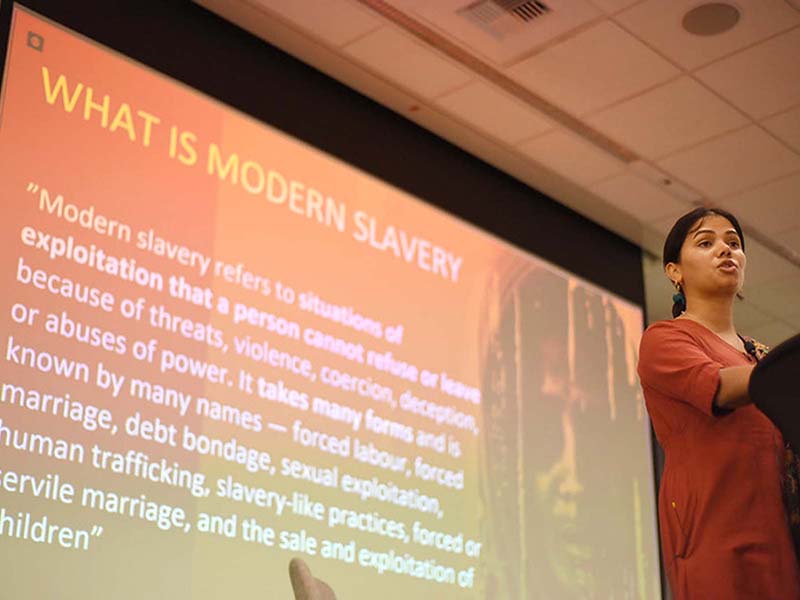
Authors
-

Managing Director, Human Rights and Inclusive Business, BSR
-

Director, Human Rights and Inclusive Business, BSR
-

Associate Director, BSR
Approaching global supply chains from a human rights management perspective can seem like a daunting challenge. Implementing a human rights program within the “four walls” of our own companies can be difficult enough, let alone extending such oversight programs beyond the first tier of suppliers—which may include tens of thousands of entities across the globe, affecting potentially hundreds of thousands of people and communities. While the UN Guiding Principles on Business and Human Rights (UNGPs) are clear that the duty to identify, prevent, mitigate, and account for adverse human rights impacts extends across a company’s value chains and business relationships (including suppliers), the UNGPs do not provide concrete guidance on how to apply such principles in practice.
Like many challenges, the question of how business should address human rights in difficult and complex operating environments is one that benefits from a collaborative approach where companies can share best practices and learn from one another’s experiences—which is why BSR established the Human Rights Working Group (HRWG) in 2012. The collaborative initiative seeks to help companies implement the UNGPs by providing operational-level guidance and bringing together a global community of business and human rights professionals. The summer meetings of HRWG, held in St. Louis, Tokyo, and Stockholm, brought together representatives of 40 companies across sectors to connect on the field’s most pressing issues.
Over the course of the summer meetings, HRWG’s discussion covered topics ranging from women’s empowerment in the business context to applying human rights considerations to artificial intelligence (AI) systems, as summarized in Human Rights Insights: Trends from the Human Rights Working Group’s Summer Meeting, which was published today.
All companies, regardless of industry, should consider the human rights risks along their supply chains and take the steps above to ensure that their practices respect and protect the rights of workers and communities.
One topic that highlighted the challenge of implementing the UNGPs in complex operating environments is the question of supply chain oversight. Questions that are commonly raised when this topic is discussed include: How far down a supply chain must due diligence reach? How can a company have leverage over a supplier many tiers down the supply chain? How can a company possibly assess a supply chain that in many cases is comprised of tens of thousands of suppliers?
The Working Group proposed the following approach to tackling these challenging questions:
- Map your key supply chains down to the commodity or raw material level where possible. Key supply chains are those that are important to the business and/or its product lines. For example, raw cocoa and dairy supply chains for a chocolate manufacturing company could be classified as key supply chains, whereas IT products for the company’s office workers would not. While the UNGPs expect companies to assess all potential risk and impacts eventually, including those in non-key supply chains, prioritization is essential, and beginning with key supply chains allows companies to capitalize on their leverage within these business relationships.
- Prioritize high-risk supply chains by analyzing factors such as country risk, commodity or product risk, supplier category risk, and more. Business considerations can also be included in this prioritization process, such as degree of spend or importance to the business; however, risk to the rightsholders in these supply chains is ultimately the most important determinant of risk.
- Conduct a human rights impact assessment in those identified high-risk supply chains and provide remedy where there is sufficient connection via the UNGPs’ cause/contribute/directly linked framework. Given the complexity of supply chains, in many situations remedy may require a collaborative approach with other key stakeholders, such as peer companies, governments, non-governmental organizations, impacted communities, and more.
All companies, regardless of industry, should consider the human rights risks along their supply chains and take the steps above to ensure that their practices respect and protect the rights of workers and communities. BSR has several tools that help companies work through the steps above—from mapping supply chains and gaining visibility and transparency to helping companies build leverage and improve remedy and mitigation. Many of these resources are shared in HRWG, along with lessons on implementation shared by member companies.
BSR members interested in joining HRWG should not hesitate to reach out and connect with us.
BSR’s latest sustainability insights and events straight to your inbox.
Topics
Let’s talk about how BSR can help you to transform your business and achieve your sustainability goals.







